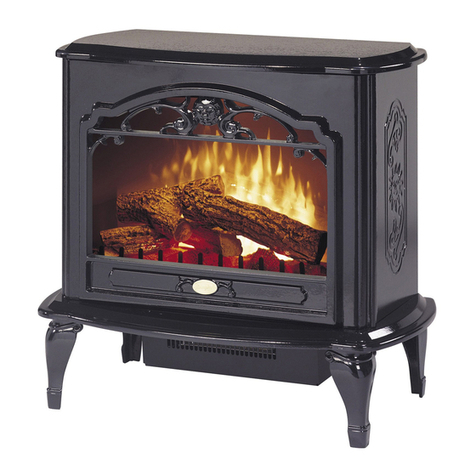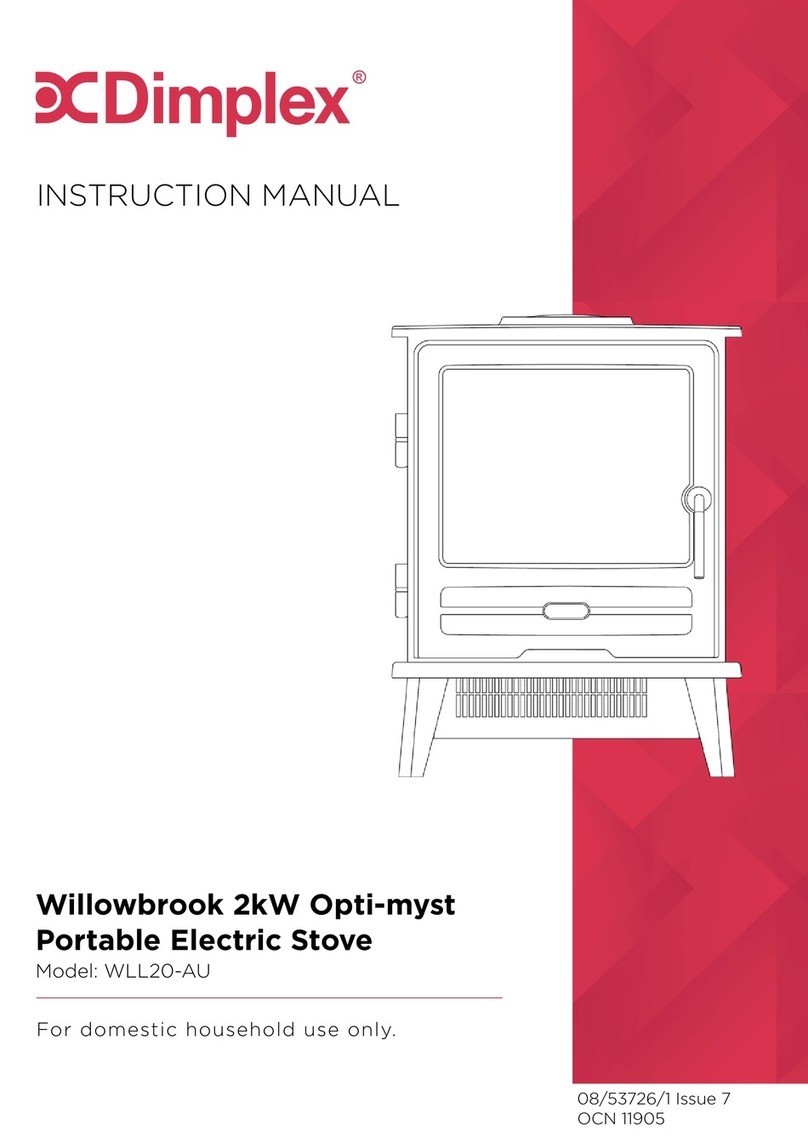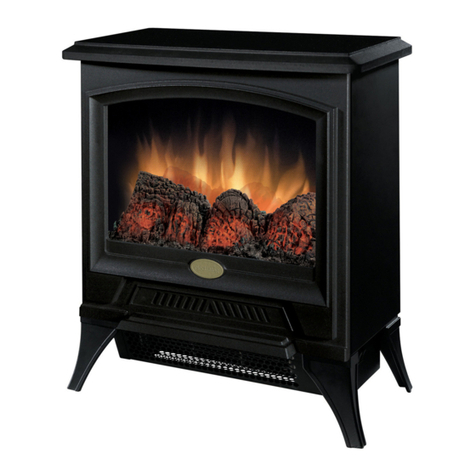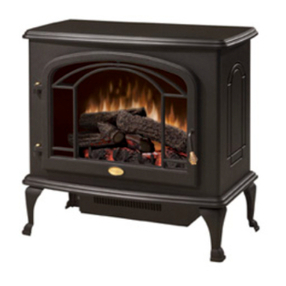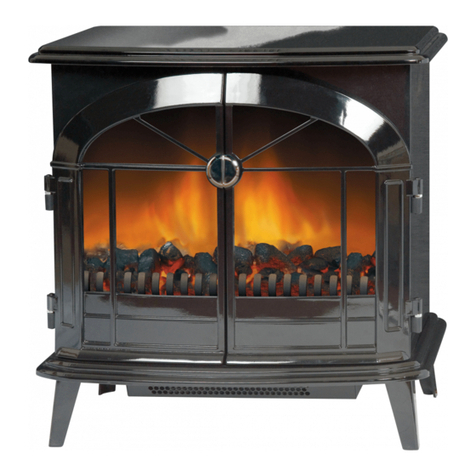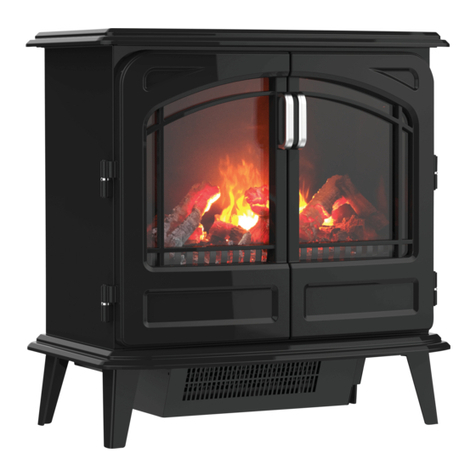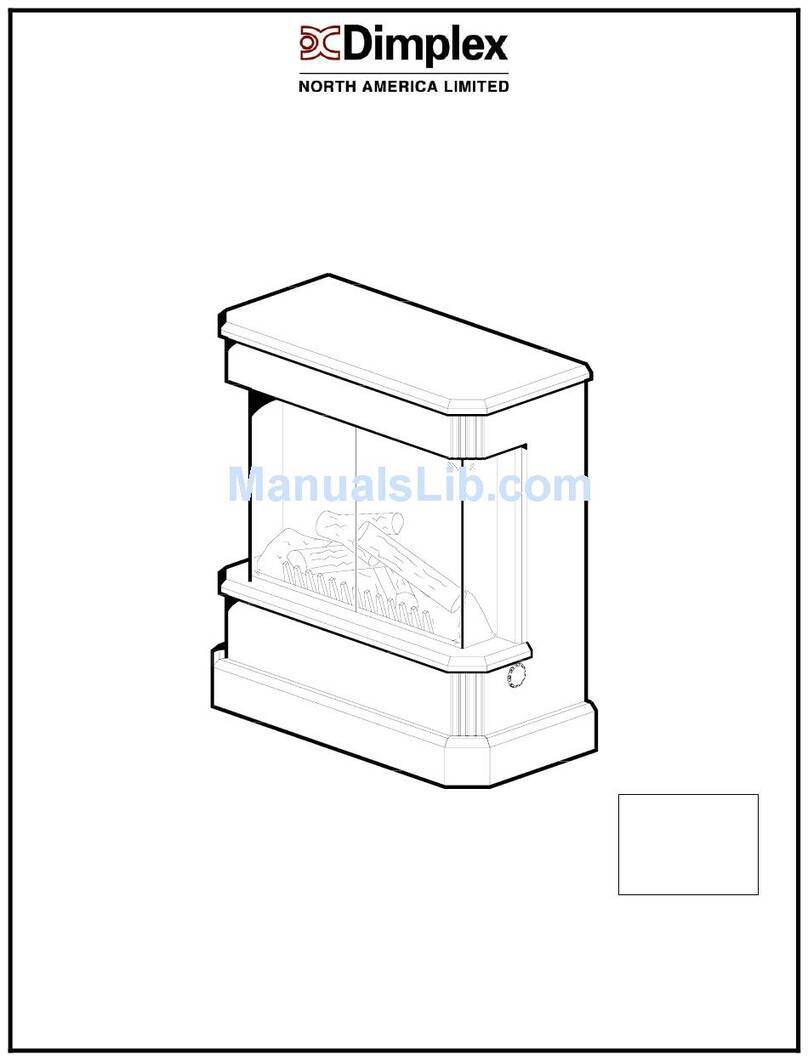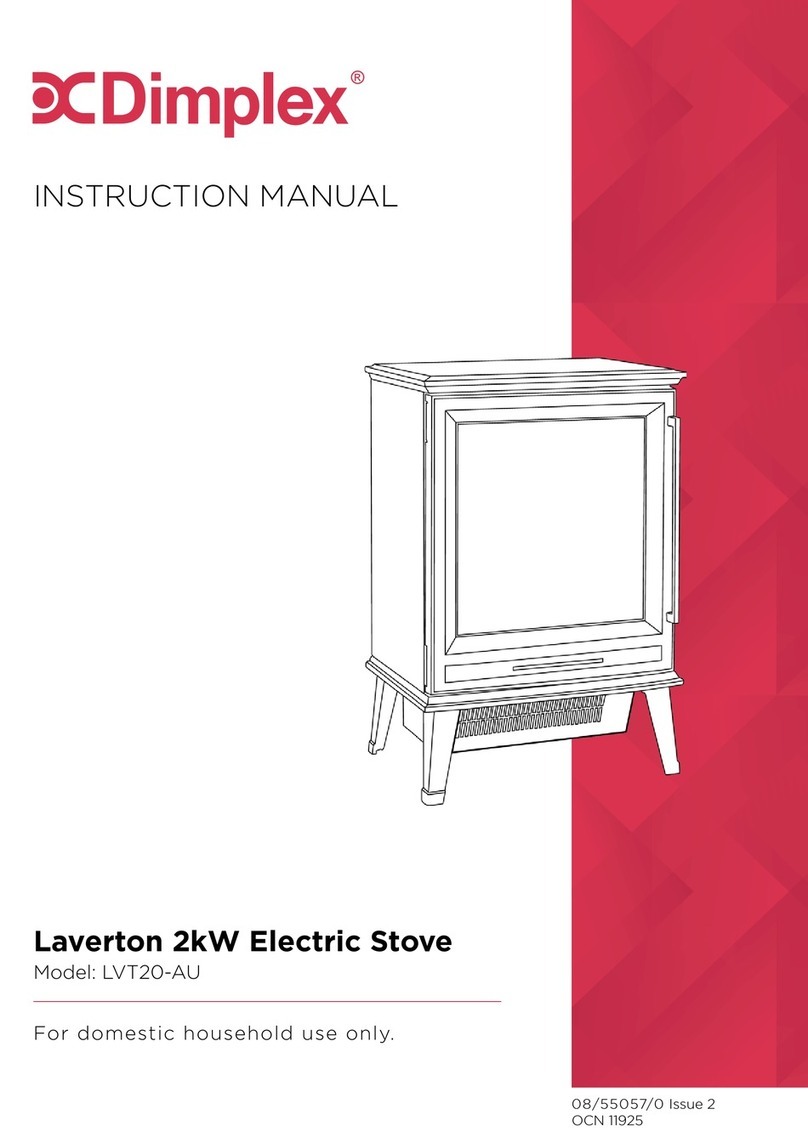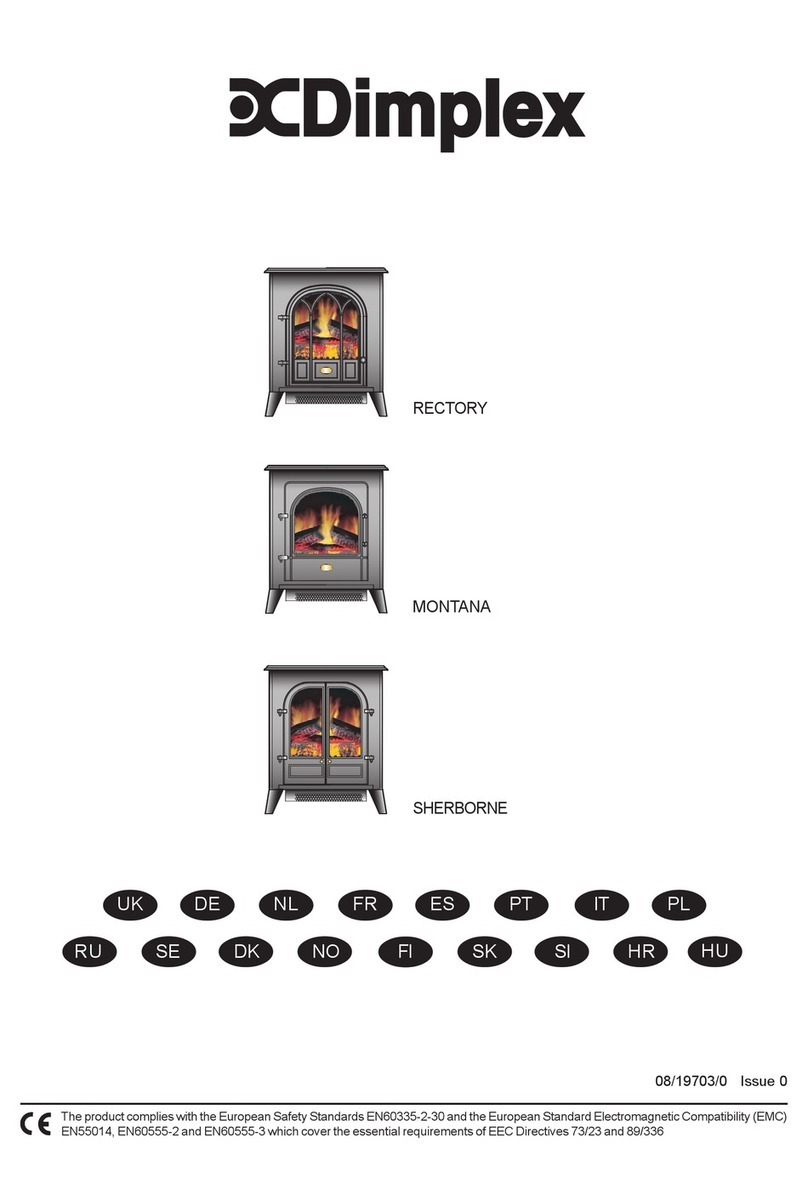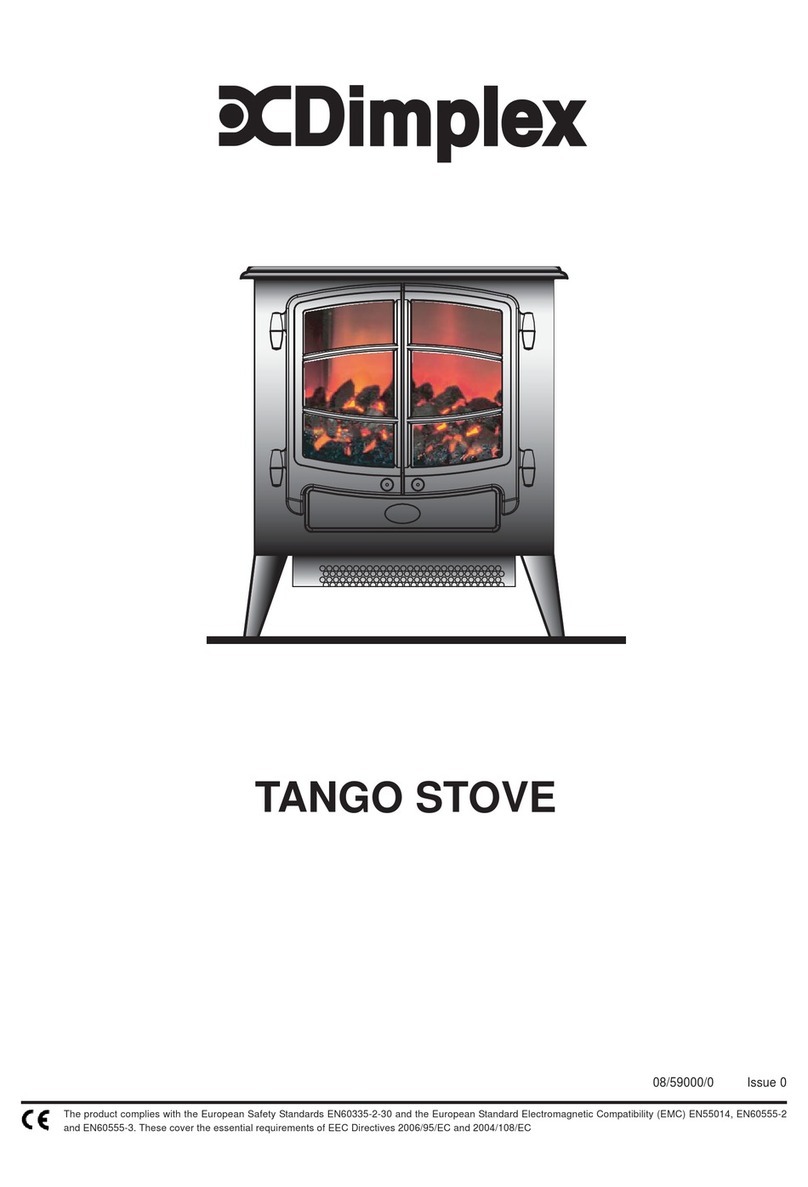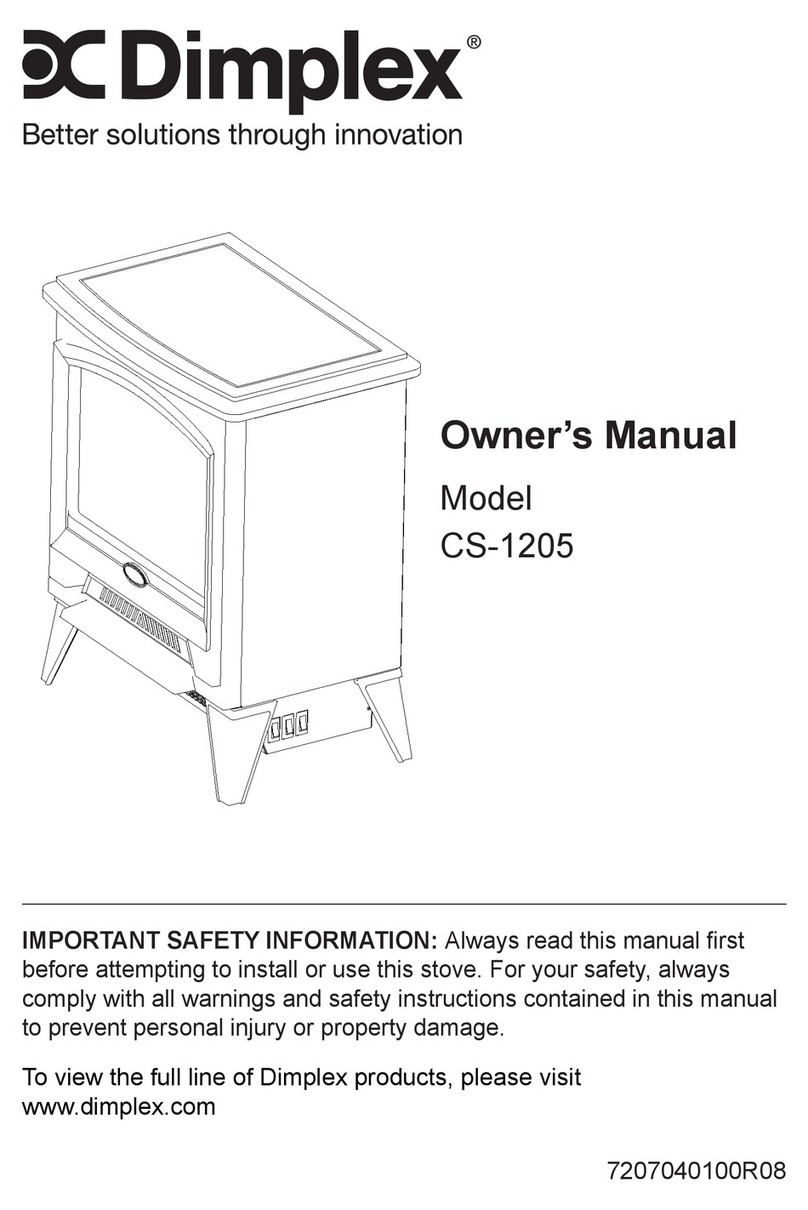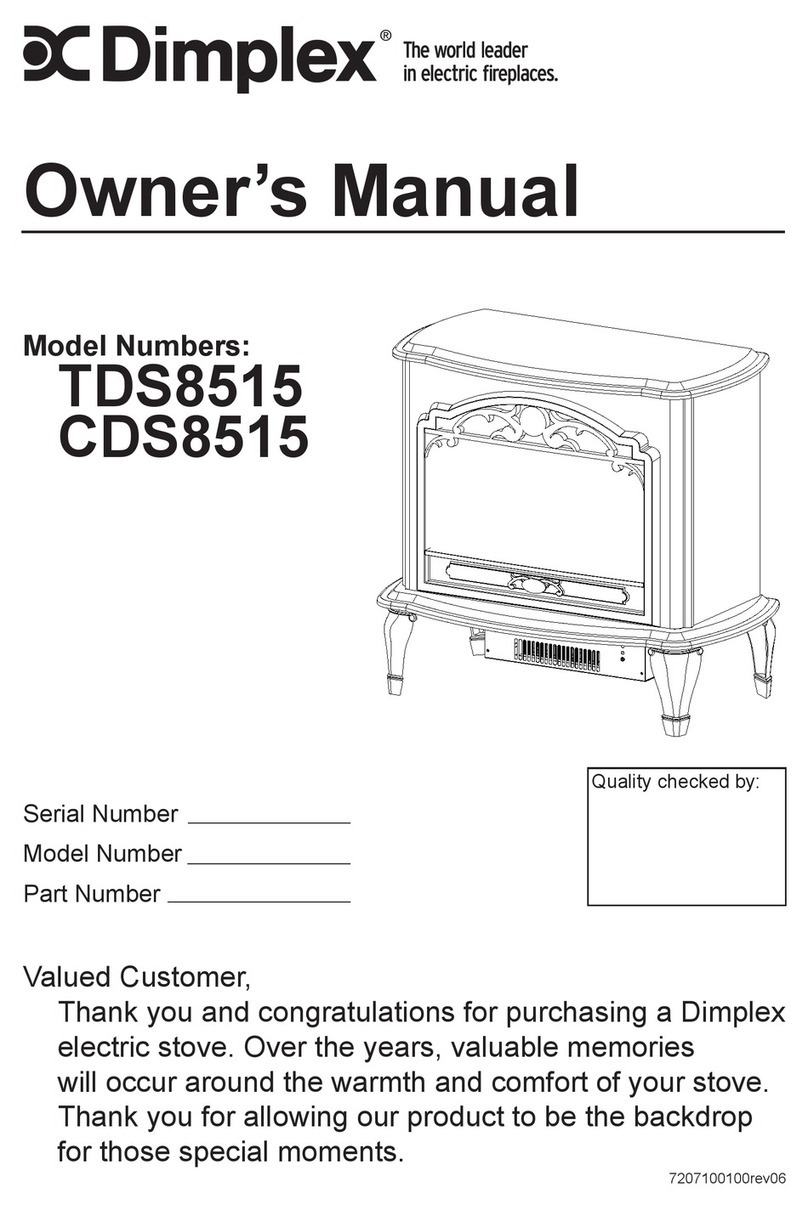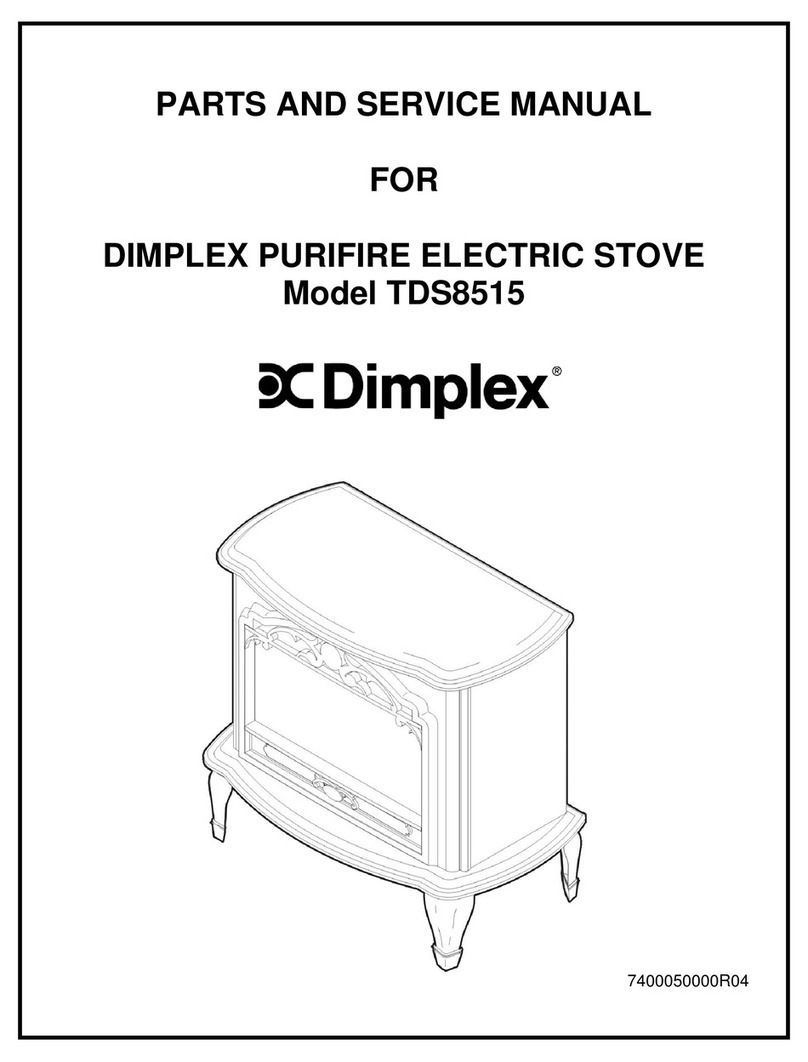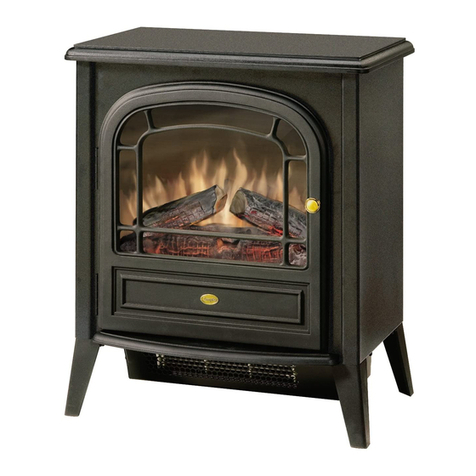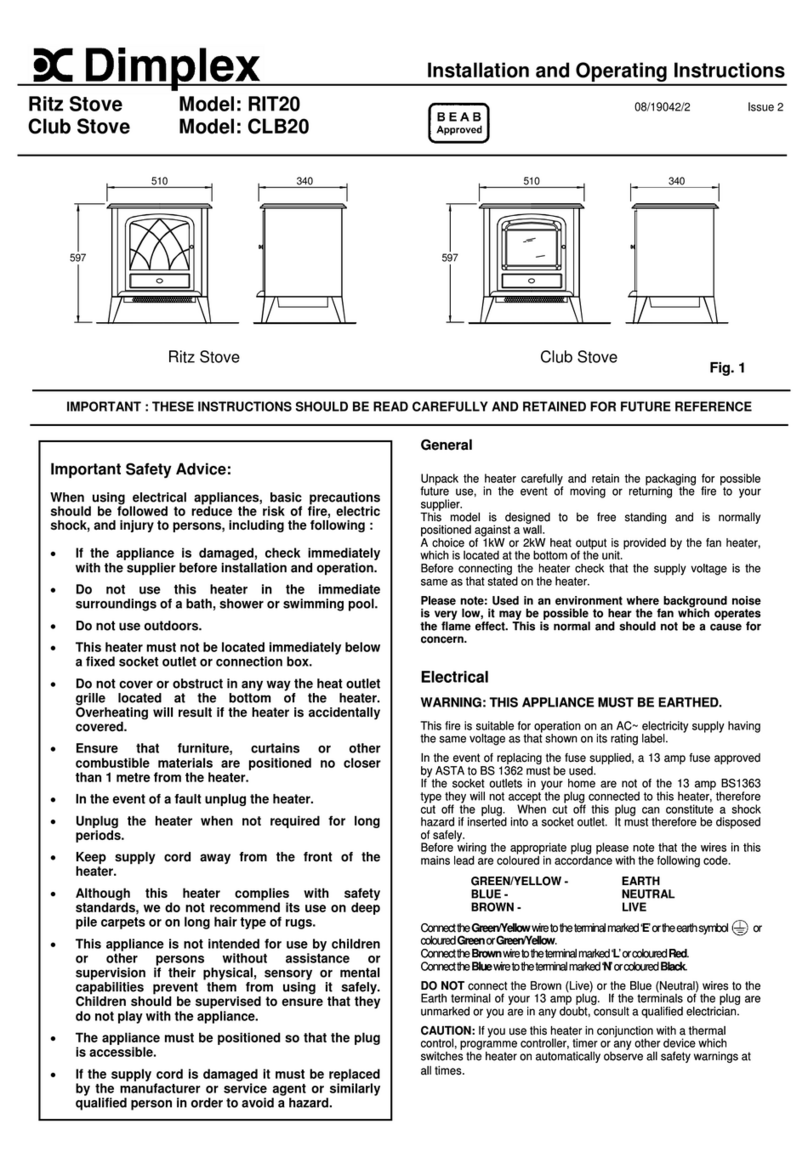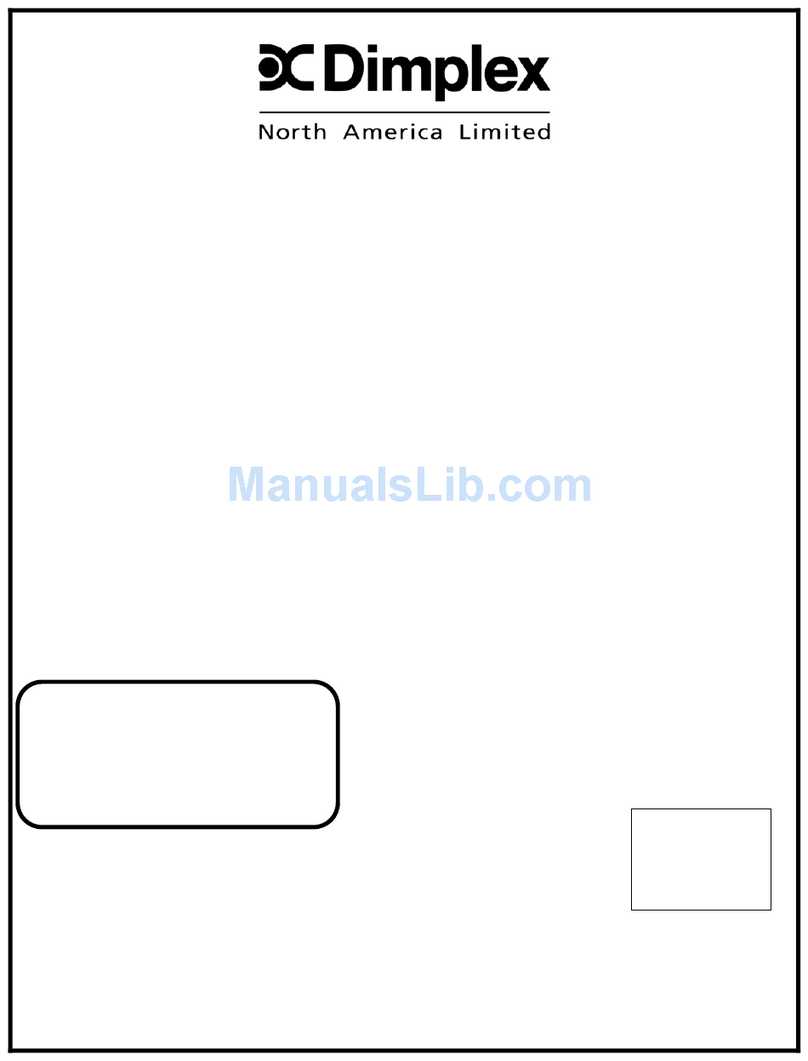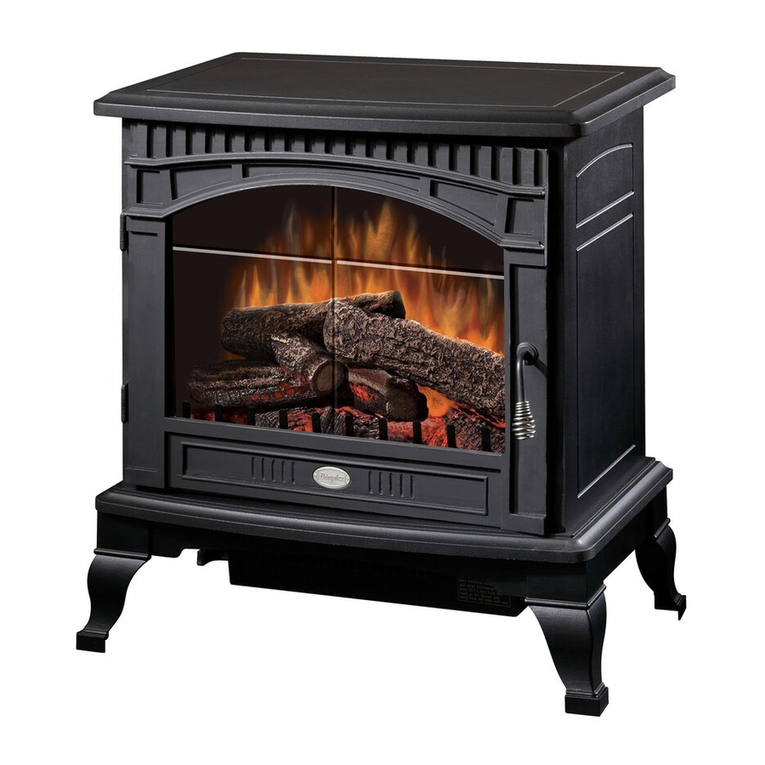Commissioning
Upon completion of installation, the stove and ue system should
be tested by a suitably qualied person to make sure it is safe for
normal use. A smoke draw test should be completed to check for
soundness of joints and seals and also that all smoke and fumes
are taken from the appliance up the chimney and emitted safely.
First warm the ue with a blowlamp or similar for about 10 minutes.
Place a lit smoke pellet on the centre of the grate with the air
controls open. Close the door – the smoke should be drawn up the
ue and be seen to exit from the ue terminal. Complete the test
with all windows and doors shut in the room where the appliance
is tted.
If a ceiling fan is present it must be operated on max for the duration
of the test. If there are any extraction fans in adjacent rooms these
too must be operated on maximum setting during the test with the
interconnecting doors open. If any spillage occurs, recheck the
suitability of the ue system making sure there is adequate air
supply to the room (as per Building Regulations).
Light the appliance and slowly increase the temperature to
operating levels. Open the main re door when the appliance
reaches normal operating condition and carry out a spillage test
using a smoke match or pellet around the door opening. If any
spillage occurs, open all windows, allow the re to go out and
recheck the ue system and ventilation.
Operating Instructions
Warning: The door and operating handles become hot when
the stove is in use. For your safety use the glove provided.
Initial Firing of Stove
We recommend that you have two to three small res before you
operate your stove to maximum heat output. This is to allow the
paint to cure and the castings to relax and consolidate location.
We recommend this ‘running in’ procedure after long idle periods
to preserve the life of the stove. During this you may notice an
unpleasant smell. It is not toxic but for your own sake we would
suggest that during this period you leave all doors and windows
open.
Air Controls
Primary air is controlled via the sliding vents (A - Fig 11) in the
bottom of the door; this provides a conventional air draught to the
bed of the re. (+) indicates more air, (-) indicates less air, (+) and
(-) are marked on the primary and secondary air controls.
Secondary air is controlled via the sliding vent (B - Fig 11) above
the door. It is this ‘Airwash’ that keeps a clean and uninterrupted
view of the re, also aiding in good secondary combustion of fuel
and reducing emissions into the chimney and environment.
The Westcott 12kW is tted with a tertiary (third) air inlet system.
Air is bled into the stove from the rear panel via an air duct over the
rear brick. Its function is to ignite unburned gasses and assist clean
burning. It is advisable to clear the holes in the duct occasionally
when the stove is being serviced or after long periods of burning
(dirty) fuel, i.e. bitumas coal. For safety this should only be done
when the stove is cold.
The tertiary air supply is permanently open and only allows a small
xed amound of air into the stove. However if you suffer from poor
ue draft or regularly use smokeless fuel (e.g. Anthracite) it may
benecial to close off the tertiary air supply. To close tertiary air,
wait until stove is cool, remove the heat shield cover (A - Fig 3),
t the screw plugs supplied into 2 holes on rear of stove (X - Fig
3) and replace heat shield cover.
Lighting the Stove
Place re lighters or paper and kindling on the grate. Light the
re at base leaving all air controls open. Allow the fuel to reach
a steady glow and build the re up gradually. Once you have a
good re established across the grate bed, further fuel can be
added as required.
Running the Stove
When your fuel is well alight you can start to restrict the primary
air intake. If you are only burning wood the primary air control can
be fully closed. If you are burning solid fuel you will require more
primary air. Your stove is burning with maximum efciency when
a bright re is achieved using minimum air inlet.
The stove can be banked up for long periods. When burning solid
fuel empty the ash pan. Open air controls and let the re burn
brightly for a short period. Refuel and close air controls; the exact
setting required will depend on the fuel used and the chimney draw
so some practice may be necessary. To revive the re, open air
controls until the re is burning brightly, de-ash if necessary and
refuel. Set air controls as required. The stove is not suitable for
overnight burning.
Notes on Wood Burning
Wood burns best on a bed of ash and it is therefore only necessary
to remove surplus ash from the grate occasionally. Burn only
dry, well seasoned wood, which should have been cut, split and
stacked for 12 months with free air movement around all sides
of the stack to enable it to dry out. Burning wet or unseasoned
wood will create tar deposits in the stove and chimney and will not
produce a satisfactory heat output. When loading wood, make sure
that the end grain of the wood in the stove is pointing away from
the glass otherwise the moisture and gases coming from the end
grain of the wood will dirty the glass.
Table 5 - Maximum log lengths
Westcott 12kW 500mm (19 ½”)
Notes on Solid Fuel burning (Other than Wood)
Always de-ash the grate before refuelling and do not let the ash
build up to the underside of the grate bars. Solid fuel produces
ash, which if allowed to build up will stie the air ow through the
grate and will eventually cause the re to die. It is important it is
to empty the ash pan after each ring of the stove. Air passing
through the rebed cools the grate. Distortion or burning out of the
grate bars is nearly always caused by ash being allowed to build
up on the underside of the grate. With some solid fuels a residue
of burnt fuel or clinker will accumulate on the grate. Allow the re
to go out periodically to remove this.
We recommend the majority of approved manufactured
smokeless fuels. Note that different types of fuel will give different
performances. Use as an incinerator for household waste is not
recommended as fumes from plastic, etc will cause pollution to
the atmosphere and will cause damage to the stove. Should any
difculties arise over fuel quality or suitability, consult your local
supplier or contact the Solid Fuel Advisory Service.
Petroleum coke fuels or household waste should not be
burned on this appliance.
- 3 -
